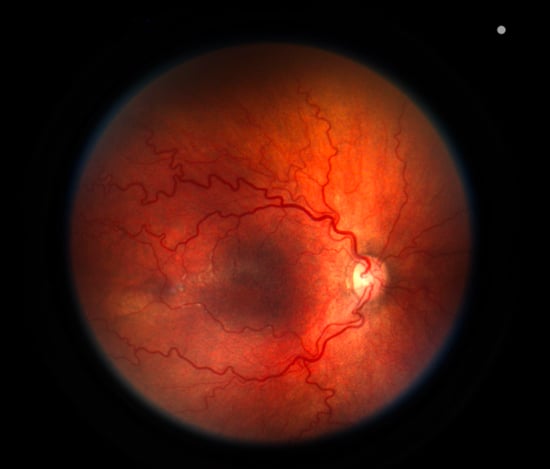A new service in Colorado will strengthen care and comfort for infants with retinopathy of prematurity through a hybrid in-person and telemedicine approach. Many infants born prematurely face the risks of retinopathy of prematurity (ROP), a potentially blinding eye disease that occurs because blood vessels in the back of the eye are not fully developed and could grow abnormally after premature birth.
Faculty members at the Sue Anschutz-Rodgers Eye Center, in partnership with Children’s Hospital Colorado and St. Mary's Medical Center in Grand Junction, created the telemedicine ROP service to monitor premature infants remotely and through monthly in-person visits until their eyes have reached full vascularization, or until they're beyond the critical period of blood vessel growth.
“Although telemedicine has been on the rise and serving many benefits for patients, especially with COVID, it’s been very limited in the area of ophthalmology,” Jennifer Jung, MD, associate professor of ophthalmology at the University of Colorado School of Medicine and director of the ROP service at Children’s Hospital Colorado, says. “However, with telemedicine retinopathy of prematurity exams, we can obtain high-quality photos of the retina to determine the need for treatment. It doesn’t take away from an in-person exam.”
Nearly 4 million infants are born prematurely in the U.S. each year, with up to 1,500 infants annually developing ROP severe enough to require treatment. ROP exams start for infants who are born at 30 weeks or less, or 1,500 grams or less.
“This is going to be the future for ROP,” Jung says. “We are moving in the telemedicine direction with the advantages of technology, and this is one area where we can exclusively benefit children with ROP and their families.”
Benefits for babies, families, and NICU nurses
The telemedicine service is available to premature infants in the NICU at St. Mary’s Medical Center, where nurses in the program will conduct photographic examinations. Those photos will then be sent to CU faculty members at Children’s Hospital Colorado to review and determine whether infants need to move beyond monitoring to treatment.
Multiple stages of ROP severity can develop in infants, but the majority of the time, infants examined will not require medical treatment. Despite this low need for treatment, examinations alone can be stressful for families. The hybrid telemedicine process intends to ease this part of the diagnosis.
“Exams for ROP can be very difficult to look at for parents because we use a speculum to hold the eyelids open and an instrument called a depressor to move the eyes around,” Jung explains. “In telemedicine ROP, we use a camera to contact the eye and take the photos. This may cause less trauma for parents watching, and through the photos, parents can also visualize the pathology to understand ROP better.”
 High-quality photos of the retina taken during exams help show ROP pathology to both trainees and patient families.
High-quality photos of the retina taken during exams help show ROP pathology to both trainees and patient families.
Completing these exams remotely will also allow families to remain closer to their newborn child during this crucial time.
“With this new model, NICUs and neonatologists won’t have to transfer babies for ROP exams,” Emily McCourt, MD, chief of pediatric ophthalmology at the CU School of Medicine and Children’s Hospital Colorado, says. “This allows us to take care of younger babies while keeping them in hospitals closer to their families.”
In addition to these important improvements for patients and their families, the hybrid process also appeals to nurses and doctors working in the NICU.
“This approach gives nurses and neonatologists the flexibility to conduct ROP photo examinations around the babies’ schedules,” McCourt explains. “It allows us to be more efficient while taking less time away from other clinical care in the operating room or clinic.”
Providing services in the program with Jung are Lauren Mehner, MD, MPH, and Michael Puente Jr., MD, assistant professors of ophthalmology, and Rebecca Braverman, MD, associate professor of ophthalmology.
Standardizing care
Leveraging the evolving technology, CU pediatric ophthalmology leaders believe implementing telemedicine in ROP could set a new standard of care and transparency.
“By taking high-quality pictures, we can be more objective in our examinations and minimize interpersonal differences in interpretation,” Jung says. “It would also be beneficial for the education of not only the parents, but the NICU staff and trainees so they can actually see and understand what ROP means.”
Outcomes for ROP patients at the CU Anschutz Medical Campus meet and exceed the national standard, with only one to two percent of infants screened requiring medical treatment over the last five years. Maintaining this high level of care before the advancements of telemedicine, Jung hopes the new service will allow CU and its partners to extend ROP care beyond the metro area and the need for physical presence.
“Artificial intelligence in connection with telemedicine photos is going to be the future for ROP,” Jung says. “I am excited to be on the front lines of that and eventually partner with the researchers in having a more objective grading system and improving predictions using AI. There’s a lot to be excited about, and a lot of room for us to explore and make this the mainstay in the future.”





